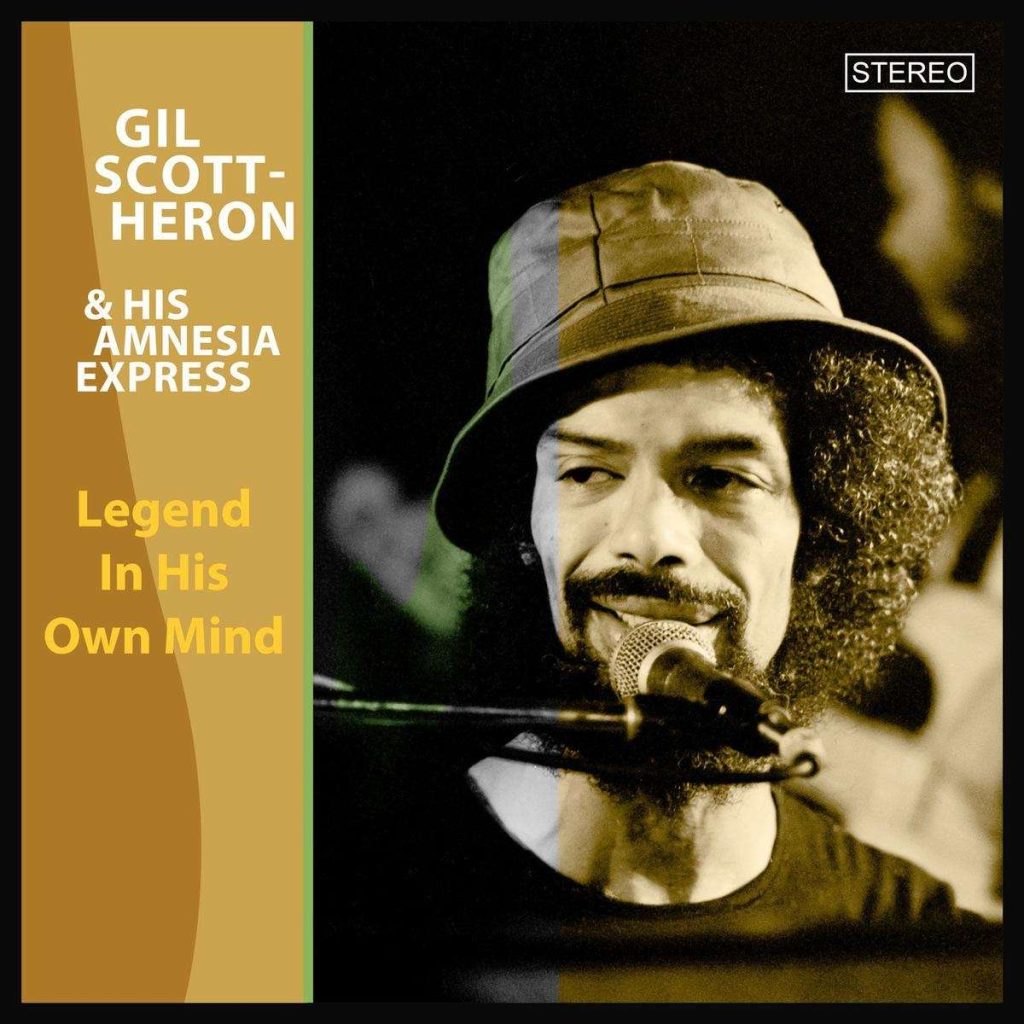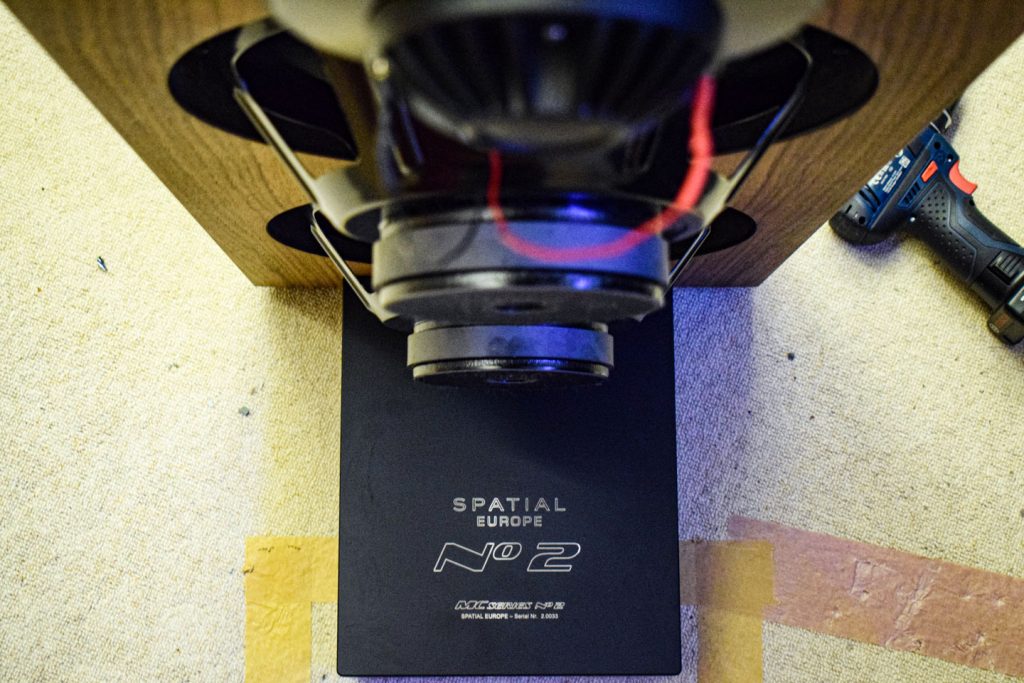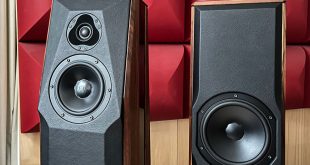We have already tested several Mach One models from Spatial Europe and were thoroughly impressed by the open baffles. But in the fall, Mach-One boss Robert Andorf contacted us with complete euphoria. After months of research, he achieved an epoch-making breakthrough. So we were even more excited and immediately ordered the first model, in which he put his new findings into practice, for testing. Since then, the Spatial Europe MCS No. 2 has been playing in the LowBeats listening room. And we’re not the only ones who are truly amazed at how much resolution the Ingolstadt native can now conjure up from the professional sound reinforcement drivers of his MCS No. 2…

The structure of Spatial Europe No. 2
Andorf has not changed the classic design of its MCS models in the new No. 2. A baffle, which is the only “housing”, consists of several panels of different thicknesses, which add up to a total thickness of 7.6 centimeters. That’s a lot of material. However, two such impressive woofers as the two built-in 12-inch drivers naturally put a lot of vibration energy into the baffle. Andorf keeps them in check through sheer mass, but also through an embedded steel plate. The nylon sleeves in which the drivers are anchored also have a calming effect and, despite their strength, also provide a certain degree of decoupling.

The workmanship of the MCS models has always been good and Andorf pays attention to the greatest possible sustainability through housing suppliers from the immediate vicinity of Ingolstadt. This enables short distances and a large selection of really attractive veneers. In any case, the test sample in olive looked super delicious…
What is pleasing about the MCS No. 2 is its still discreet appearance: with a width of 40 centimeters and a height of just over one meter, it only slightly surpasses classic hi-fi loudspeakers. For an open baffle speaker, this is not a very large area – just think of the recently tested Thorens HP 600: it is 1.5 times larger.
The MCS No. 2 is equipped with – as I already mentioned – two impressive 30-centimeter high-performance woofers and a new 8-inch (20 cm) coaxial system, in the middle of which a spherical wave horn ensures highly efficient reproduction with a very wide dispersion (opening angle: 180 degrees). The coax comes from the Spanish specialist Beyma and is considered to be extremely resilient. Andorf therefore runs it down to 100 hertz – the entire vocal range (and all the associated overtones) that is important for reproduction therefore comes from a point source. This should not be a disadvantage for the illustration. Especially as Andorf also allows his dipole design to radiate forward and backward in the high frequencies.
The crossover…
…gets its own sub-item here, because it really is exceptional. A few years ago, Andorf met the former chief developer of Klein + Hummel – one of the biggest names in professional audio. This man talked about the superiority of the serial crossover. Andorf was immediately hooked and began researching. With serial filters, the drivers – in this case the two woofers, the midrange and the tweeter – are in series and most of the filter components are in parallel. With classic crossovers, the drivers are in parallel and the components are in series – you can guess the difference. Andorf: “I’ve tried everything. With our series filter, the speakers are in a completely different league.”
However, there is one drawback: little theory and virtually no calculation programs. So Andorf, who was assisted by hi-fi salesman Tim Hoffmann, chose the rustic route and tried everything – an extremely time-consuming process. Quite often, when I called, he would turn me away because he was in one of his hour-long listening sessions…
But they probably got further: Andorf discovered the art of omission for the new generation of his open-baffle sound transducers. In the end, only seven filter components remained (the larger capacitor values composed of several small capacitors). A particularly fortunate coincidence was that the tweeter has no resistance in the signal path. This is of course ideal for the impulse.
Practice
Traditionally, the Robert Andorf models have a high degree of efficiency. The MCS No. 2 is no exception: 93 dB (2.83 volts W/m) was measured by laboratory manager Jürgen Schröder. This is so high that even small tube amplifiers can produce a decent level.
Andorf himself propagates the idea of small tubes and explicitly recommends the Audion models. Audion boss Graeme Holland tunes their output transformers to the respective Spatial Europe model on request – see LowBeats report.

The combination with the tubes is a fine idea, but the No. 2 also harmonizes excellently with excellent transistor electronics. With my favorite transistor Soul Note A2, for example, it sounded wonderfully open – and very loud when needed. And because it’s great fun to listen very loudly with the new No. 2, my recommendation is: a good 100 watts per channel (or more)…
With a dipole loudspeaker, it is essential to discuss the positioning. Because simply placing these speakers against the rear wall is not a good idea. Dipoles are so-called fast transducers; they produce the most bass where the sound velocity is highest – usually in the center of the room. This is usually a problem even for extreme audiophiles.

Robert Andorf recommends a distance of at least 65 centimeters from the front edge of the loudspeaker to the rear wall and a minimum listening distance of 2.5 meters. Now, of course, we have optimal possibilities in the LowBeats listening room (70 square meters) and can push a speaker to perfection. As the picture also shows, we have chosen a much greater distance to the rear wall of almost 2 meters. Then the bass was almost perfect. The rear wall should also not be too heavily damped, as the energy radiated from the rear is taken into account in the tuning. If everything is muted here, the No.2 sounds pretty dull…
And another tip: the MCS No. 2 has plenty of pepper at the top due to the strong rise from 10,000 Hz. We angled the baffles so much that the meeting point of the axes was about one meter in front of the listening position – and all annoyances disappeared.
Sound
I myself have heard many of the Mach One models and am a great fan of the open baffle principle. But I have never heard any of Robert Andorf’s models with such precision, transparency and dynamics – although I have heard quite a few that were considerably more expensive. With its latest steps in crossover tuning, the Ingolstadt-based company really does seem to have taken a big step forward. But perhaps only the new coax with omnidirectional horn fits so well with the two 12-inch basses. Or it all comes together and the long, arduous work of the company boss finally results in a product that leaves few questions unanswered…
In terms of sound, the MCS No. 2 is an experience. But perhaps differently than many expect. Some of the last Mach One models tried to provide more thrust from below and more rich low bass – which often led to a somewhat cloudy and undefined bass. But the new No. 2 goes all out. And not with a “Wow what a fat”-bass, but with a harmoniously perfectly integrated, extremely precise and wonderfully bouncy bass tone that doesn’t reach absurdly deep, but makes all shades of bass audible. The blaring bass of the new Peter Gabriel work “I/O” was exactly the No. 2’s playground: how much information this transducer extracted from the bass lines – terrific!
No. 2 tends to be tuned a little light – see also practice. With the appropriate angulation, however, this is no problem and there remains this wonderful resolution, which, for example, fans out the Tolyqyn choir in the piece “Goldmine” (album “Silver Seed”) wonderfully finely in the depths. OK: Many other very good loudspeakers also achieve such an open reproduction.

But not with this effortless dynamism. The fine dynamics that the coax shakes out of its sleeve – or horn – are magnificent. Perhaps only the experienced listener will notice it immediately. But it’s a rare zero-to-a-hundred experience that classic hi-fi speakers can only dream of: You understand every note, every syllable, every overtone, no matter how subtle, and it sounds absolutely authentic – because there is no recognizable dynamic brake.
I also really liked the spatial representation. Here I like to use the tribute release of a Gil Scott-Heron concert from Bremen in 1983. The recording (“Legend Of His Own Mind”) is so vivid, the audience is harmoniously integrated. What the MCS No. 2 conjured up with this recording was breathtaking: because it not only placed the singer on the imaginary stage with enormous vividness, but also gave the recording a credible depth. Especially the part in which he sings with the audience (“Three Miles Down”) became a goosebump experience. At any rate, I had rarely heard this concert so thrilling before.

Conclusion Spatial Europe MCS No. 2
With MCS No. 2, Spatial Europe is opening a new door. Although still comparatively small, the new Spatial Europe reveals the full dynamics of a recording and draws the listener straight into the musical action. It is an intensive experience sound transducer and unquestionably an adornment of the dipole principle. Considering this, the price is fair.
Rating
Sound QualityUsabilityBuild QualitySummary |
| The rating always refers to the respective price category. |
| | Extremely detailed, spatial sound with wonderfully tight bass |
| | Good workmanship, many surfaces, ingenious look |
| | High efficiency, amazingly high maximum level |
| | Requires more space than classic hi-fi speakers, strong bundling |
Distribution:
Mach One Classics
Brunnhausgasse 2
85049 Ingolstadt
www.machone-classics.de
Pair price (manufacturer’s recommendation):
Spatial Europe MC Series No. 2: 7,800 euros
Technical data
| Spatial Europe MC Series No. 2 Mk II | |
|---|---|
| Concept: | 3-way dipole speaker with coax |
| Fitting: | TT: 2 x 30 cm bass, MHT: 1 x 20 cm coax with omnidirectional horn |
| efficiency: | 93 dB (2.83 Volt / meter) |
| Maximum level (duration / short term): | 106 / 118 dB |
| Minimum power for max. level (duration): | >70 watts |
| Impedance minimum: | 4.0 Ohm (@64 Hertz) |
| Dimensions (H x W x D): | 105.0 x 40.0 x 7.6 (baffle) cm |
| Weight: | 27.0 kilogram |
| All technical data | |
More from Spatial Europe:
Test dipole radiator Spatial Europe MC Series No. 4 Mk II
Test dipole speaker Spatial Europe No.7: narrow dispersion, intense musical life
Test dipole radiator Spatial Europe MC Series No. 4 Mk II
Spatial and Audion – dream team of dipole speaker and tube amp

















